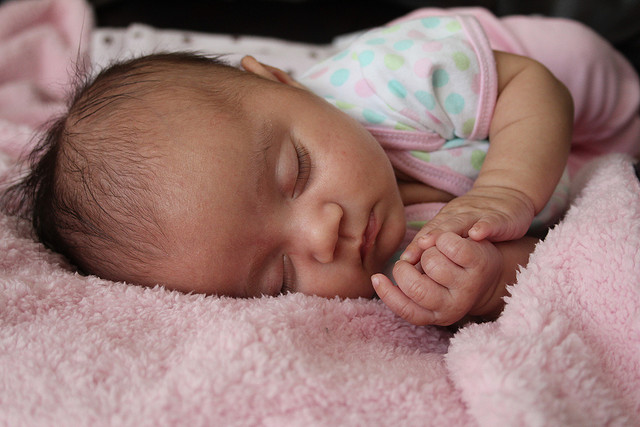The Safe Sleep for Your Baby video provides steps to create a safe sleep environment for your baby and lower the risk of Sudden Infant Death Syndrome, or SIDS.
Transcript – Safe Sleep for Your Baby video
Is there anything more peaceful than a sleeping baby?
Creating a safe sleep environment will help your baby sleep safely and lower the risk of Sudden Infant Death Syndrome, commonly known as SIDS.
There are steps that you can take to create a safe sleep environment for your baby and lower the risk of SIDS.
Provide a smoke-free environment before and after your baby is born. One-third of all SIDS deaths could be prevented if pregnant women did not smoke. Second-hand smoke also increases the risk of SIDS, after your baby is born.
Always place your baby on his or her back to sleep, at naptime and night time. Babies who always sleep on their backs have a lower risk of SIDS. Placing your baby on his or her back to sleep works. The rate of SIDS has dropped by more than half since the 1999 Back to Sleep campaign.
Provide your baby with a safe sleep environment that has a firm surface and no pillows, comforters, quilts or bumper pads. The safest place for your baby to sleep is in a crib, cradle or bassinet that meets Canadian safety regulations.
Place your baby to sleep in a crib, cradle or bassinet next to your bed. Room sharing for the first 6 months lowers the risk of SIDS and helps your baby sleep safely.
Breastfeeding can protect your baby. Any amount for any duration offers protection; but exclusive breastfeeding for the first 6 months can lower the risk of SIDS by up to 50%.
Parents and all caregivers can create a safe sleep environment at home, in childcare settings and when travelling.
Remember these steps to create a safe sleep environment for your baby and lower the risk of SIDS.
Provide a smoke-free environment before and after your baby is born.
Always place your baby on his or her back to sleep, at naptime and night time.
Provide your baby with a safe sleep environment that has a firm surface and no pillows, comforters, quilts or bumper pads.
Place your baby to sleep in a crib, cradle or bassinet next to your bed.
Breastfeeding can protect your baby.
The Safe Sleep for Your Baby brochure is available from the Public Health Agency of Canada.

